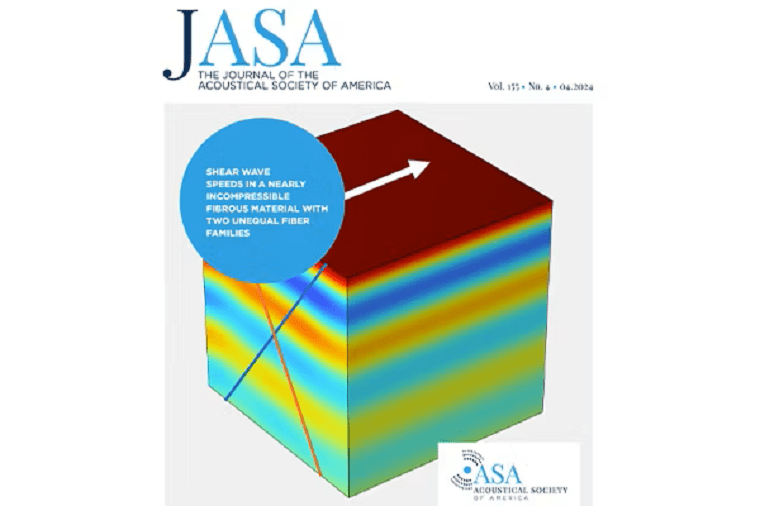Impacts or blasts from explosions can lead to potentially damaging shear waves in the brain, which can change the shape or deform brain tissue. Brain tissue is a complex material, mechanically reinforced by the fibers that carry signals between brain cells.
A team led by Philip V. Bayly, PhD, the Lee Hunter Distinguished Professor and chair of the Department of Mechanical Engineering & Materials Science in the McKelvey School of Engineering, investigated this shear wave behavior in a nearly incompressible fibrous material with two unequal fiber families. Their results were published in the April 2024 issue of the Journal of the Acoustical Society of America.
Shuaihu Wang, a graduate student in Bayly’s lab, is first author of the paper, featured on the cover. His work improves the understanding of shear wave behavior in soft anisotropic materials, or those that have different properties in different directions. In addition, their findings may facilitate developing and interpreting magnetic resonance elastography (MRE) methods to characterize the mechanical properties of soft fibrous tissues noninvasively.
